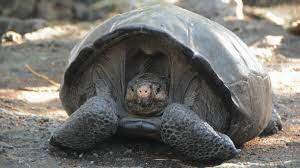Environment & Ecology
In News: Chelonoidis phantasticus, a giant tortoise species discovered after a century
- Chelonoidis phantasticus is a giant tortoise species believed to be extinct for more than a century.
- Named Fernanda after her Fernandina Island home, the tortoise is the first of her species, Chelonoidis phantasticus, to be identified in more than a century.
- A giant tortoise, found alive in 2019, has been confirmed to belong a Galapagos species long believed extinct.

Fernandina Island
- Fernandina Island is the third largest, and youngest, island of the Galápagos Islands, as well as the furthest west
- Like the others, the island was formed by the Galapagos hotspot.
- The island is an active shield volcano that has most recently been erupting
Galapagos Islands
- The Galapagos Islands, spread over almost 60,000 sq km, are a part of Ecuador, and are located in the Pacific Ocean around 1,000 km away from the South American continent.
- Ecuador made a part of the Galapagos a wildlife sanctuary in 1935, and the sanctuary became the Galapagos National Park in 1959. In 1978, the islands became UNESCO’s first World Heritage Site.
- The Galapagos Islands host a wide array of aquatic wildlife, including marine iguanas, fur seals, and waved albatrosses.
Previous Year Questions
Q.1) Consider the following animals: (2021)
- Hedgehog
- Marmot
- Pangolin
To reduce the chance of being captured by predators, which of the above organisms rolls up/roll up and protects/ protect its/their vulnerable parts?
- 1 and 2
- 2 only
- 3 only
- 1 and 3
Source: Indian Express













